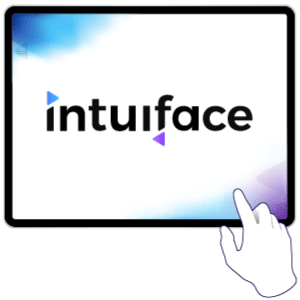The Unstoppable Shift to Touch-First Digital Signage

The digital signage industry is in the midst of a struggle to keep up with the rate of change in technology and consumer expectation.
Let me explain.
The origins of traditional digital signage technology can be traced back almost a hundred years to the advent of television – a push medium with predefined programming and no immediate audience feedback. The signage community eventually shifted from broadcast to narrowcast, targeting “spectators” by location and time, but the principles (and thus the architecture) remained unchanged. Push media onto a screen and hope it attracts attention.Meanwhile, in the last 30 years, computer interaction technology has evolved to a point where nearly two billion people access highly personalized information using touch-based devices. Moreover, trends indicate these connected consumers – of goods, of media, of community - will soon spend more time on their devices than on watching TV. The ability to access any content, anywhere, anytime in an efficient way beats even the narrowcast. It’s no contest.This shift in information consumption has key implications on the digital signage industry:
- Enabling real-time access to contextual and/or personal information is a must have.
- This access must be intuitively natural. Today’s digital culture has elected touch gestures as its favorite interaction technique. You’re not going to find a mouse and keyboard in anyone’s pocket.
- Content and design must be adapted for a multitude of form factors, from pocket-sized personal devices to multi-screen displays for large and engaged audiences.
Traditional digital signage platforms are ill-equipped to embrace these implications. The reason is simple – their technology predates the interactive device revolution. A fast-moving marketplace didn’t leave time to start over so the transition to interactivity had to preserve existing approaches. The solution has been to adopt HTML5 – code-heavy websites with single touch capability, compatible with existing content management systems, display technology and distribution networks. Great for the vendors, not so much for their customers. Few signage customers have HTML5 skills of any kind, let alone advanced skills for touch-enabled HTML5, so they’re left with unoriginal, template-based content, a restricted list of devices and a never-ending professional services bill.
True touch-first digital signage requires a platform built from the ground up to
- target a large range of devices – from extra-large video walls and large format displays to 7” tablets
- support true multi-touch – two or more touch points – and other interactive approaches like gestures, tag readers and connected objects
- help signage customers create their own interactive, connected and rich content without requiring any coding skills
- incorporate powerful and flexible analytic capability, objectively capturing user selections to overcome the eternal ROI challenge of traditional signage.
- deliver all other traditional signage capabilities - from scheduling to content management
Ever wondered what drives the IntuiFace team? Now you know.
Passive digital signage remains king for spectacular and high-impact communication, optimal for brand recognition. Everything else will be interactive. In fact, trend setting manufacturers like Samsung are building interactivity into their latest signage hardware (e.g. Samsung SSP).
Touch-first signage is no longer a luxury, it’s an inevitability.





